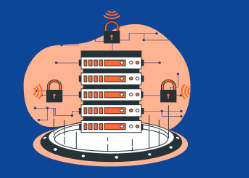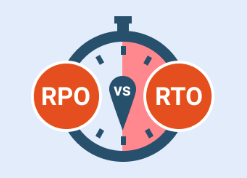We’re excited to introduce MSP360 Managed Backup 8.0 with advanced integration with ConnectWise PSA, simplified backup management with templates, and more. Continue reading
Top 10 Mistakes MSPs Make that Cost Time and Money
Running a business is challenging, even in the best of times, let alone in times of economic instability. More than ever, it is important to think about your business processes and identify opportunities to eliminate costly inefficiencies or errors. This way, you’re in the best position possible to weather any turbulence brought on by the coronavirus pandemic and emerge safely once it’s over. Continue reading
5 Ways MSPs Can Humanize the Customer Experience
While managed services providers (MSPs) function in large part to assist their customers with support and delivery of their latest technology needs, in reality, this is only part of the equation, as MSPs should also consider how they can step beyond the speeds and feeds of the technology and humanize the technology experience for their customers. Continue reading
Seeding Backup for a Client with Slow Internet
Nothing hampers data backup operations like a slow internet connection. If the bandwidth of your clients' networks is limited, or their connections are flaky or unreliable, you're likely to discover that directly backing up data over their network takes much longer than you (or they) would like. Continue reading
Is Your Billing Process Slowing You Down?
As the technology support industry matures, managed service providers require greater efficiency and flexibility in their billing. The contract and billing process has become the conduit that allows you to clarify the relationship expectations between you and your customer. The business’s success depends on clearly defining, auditing, and reporting on the services you agree upon. Continue reading
News You Might’ve Missed. June 2022
What's new this month in the news for MSPs? Google adds rate-limiting, threat intelligence, bot management, and other capabilities to Google Cloud armor; Google launching Google Public Sector cloud division; Cybersecurity warning from CISA on Karakurt data extortion; New evasive Symbiote malware infecting Linux systems; and more.
How Ransomware Incidents Increased in 2021
The 2021 headlines were dominated throughout the year by ransomware attacks that devastated businesses in every industry.
Some of these landmark attacks included the strikes on the Colonial Pipeline, meatpacking company JBS Foods, the National Basketball Association, insurer CNA, Kaseya, and other organizations. Continue reading
Taking Vacations as a One-Person MSP
There are many great things about running a one-person managed services provider (MSP) company. As an owner, you get complete control of the future of the business, what clients it takes on, what specialty areas it might have, and other significant decisions. Additionally, you get to set the pace of the business and its overall growth. However, what happens when you want to take a vacation? Continue reading
Communication Strategies for MSPs
Introduction
You’ve probably heard the phrase “No news is good news ''. When it comes to your MSP business, it’s definitely not true. In fact, it could be a sign of trouble. Effective client communication is an enormous part of a long-term growth strategy. If your clients are suffering in silence, you’re probably going to lose them without a chance to amend the relationship. Continue reading
Why SLAs are Important and Necessary
When developing a successful services business, meeting and exceeding exceptions is critical. For managed services providers (MSPs), these expectations are often codified in a service level agreement (SLA). An SLA is a document that defines expectations between MSPs and their customers to set the stage for a long, successful relationship.
What is an SLA?
At its most basic, an SLA is an agreement between a service provider and the customer on different aspects of how the service will be delivered, such as quality, availability, and service elements. This is typically outlined in a formal contract or document that all parties agree upon. For an MSP, an SLA may include agreements around the quality of service, time to respond to a ticket, commitment to uptime, or other factors that are individual to each MSP-client relationship.
Benefits of SLAs for MSPs
The benefit of a comprehensive SLA for an MSP is that it sets the expectations for the business to the customer. It helps ensure that the client is satisfied, and the relationship is managed smoothly. It can also provide a framework for an MSP to report back on the success of their customer service and ensure that perceptions of how an MSP should work are clearly aligned with expectations. It can also serve as a protection mechanism for an MSP in the event of a lawsuit or other challenge, should those expectations become misaligned or misunderstood.
How to Create and Manage SLAs
The structure of an SLA will vary from MSP to MSP. But in all cases, a good SLA should provide clear guide rails and expectations for the relationship with clients, is clearly measurable, and outlines penalties or remediations should the SLA be missed. SLAs may also be broken down into several categories based on the type of service or priority of support to the customer.
There are, however, some straightforward best practices that MSPs should consider following as they look to codify their SLAs with customers or ensure the ones they have in place already are optimized for success. First, they should ensure each SLA has a clear service definition, such as which assets are covered by support services. Second, they should include realistic benchmarks for the performance of those services, such as uptime, response time, or time between issues.
Keep in mind, too, that SLAs don't spell out the responsibilities of MSP alone. They may also include the customer's responsibilities for maintaining certain assets, such as maintaining certain best practices or how they should report issues (including how the customer should contact you if there is a problem or even a preferred method). As noted above, the SLA may also specify how the customer will be compensated if an SLA is not met, such as getting money back or receiving a discount on future services.
While it’s true that an MSP should implement SLAs wherever possible to govern the relationship with clients, there are a few potential exceptions to consider. These exceptions might include an MSP entering a new customer environment with unstable networks before they have been granted access, or a demanding customer with unrealistic expectations about service levels.
While managing SLAs sounds may sound intimidating, there are tools that can help. MSPs can leverage management tools that keep track of their SLAs and report on SLA compliance against these metrics.
Conclusion
While managing SLAs and expectations may not be the most exciting or thrilling part of running an MSP business, it’s certainly essential to ensuring customer satisfaction and protecting the business against unanticipated threats. In doing this, an MSP can ensure that it sets up its relationships with customers for the long haul, and it can focus on delighting them with its services for many years to come.
Best Practices for Overcoming IT Talent and Retention Challenges
It’s no secret that hiring – let alone retaining – talented IT professionals is a real challenge. It was hard before the pandemic, when 42% of businesses reported sourcing as their top difficulty in recruiting for IT roles. But it has become even harder following the pandemic and the “Great Resignation,” which led to a surge in the number of tech workers who are leaving their jobs for other companies – or, in some cases, even exiting the industry completely. Continue reading
5 Ways MSPs Can Stand Out in a Competitive Market
Just because you have a successful Managed Service Provider (MSP) business today doesn’t guarantee you’ll remain successful going forward. Market conditions are always changing – not least in the MSP industry, which continues to grow steadily as more players enter the market – and MSPs must constantly adapt to keep ahead of the competition. Continue reading
















